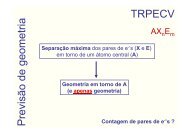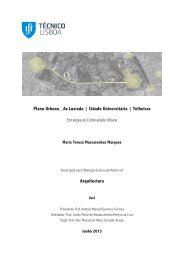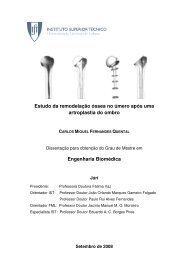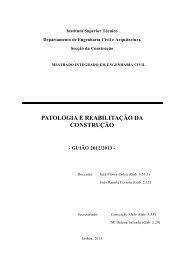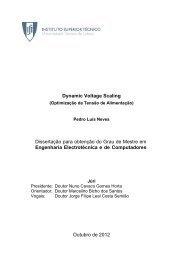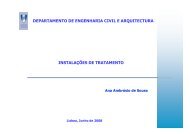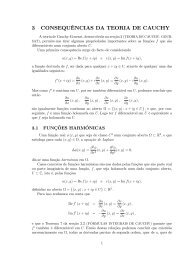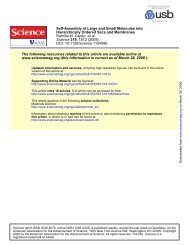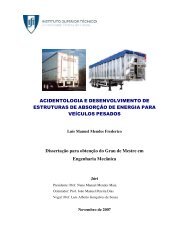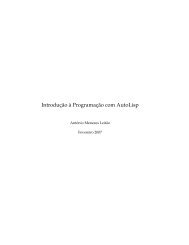dissertacao.pdf
dissertacao.pdf
dissertacao.pdf
You also want an ePaper? Increase the reach of your titles
YUMPU automatically turns print PDFs into web optimized ePapers that Google loves.
factorization of N. That is, each user Ui gets the public key < ei, N > and the<br />
private key < di, N >. Simmons [42] showed that, without needing to factor the<br />
modulus, if the same plain text is encrypted and sent to two users with co-prime<br />
public exponents, any other user can decrypt the corresponding cypher text.<br />
Theorem 19. Let N = pq be a RSA modulus and let < e1, N >, < e2, N ><br />
be two public keys such that (e1, e2) = 1. Suppose a plain text m is encrypted<br />
with both public keys. Knowing c1 = m e1 (mod N), c2 = m e2 (mod N) and the<br />
public keys, we can compute m in time polynomial in log(N).<br />
Proof. Knowing e1 and e2, we compute integers a1, a2 such that a1e1 +a2e2 = 1<br />
using the Extended Euclidean Algorithm. Now we compute<br />
c a1<br />
1 ca2<br />
2 ∼ = m a1e1 m a2e2 ∼ = m a1e1+a2e2 ∼ = m (mod N) (38)<br />
Both the Extended Euclidean Algorithm and the final computation are done in<br />
time polynomial in log(N), so the result follows.<br />
So this means that anyone with access to the public keys and the cypher<br />
texts would be able to intercept all the plain texts which would be encrypted<br />
twice to different users.<br />
We implemented this attack and tested it for various values of the size of N.<br />
The results are compiled in Table 2.<br />
Table 2: Common Modulus Attack’s Experimental Results<br />
size of N (in bits) time to compute m (in seconds)<br />
8 0.000021<br />
16 0.000022<br />
32 0.000048<br />
64 0.000059<br />
128 0.000188<br />
256 0.000478<br />
512 0.001517<br />
1024 0.007022<br />
2048 0.036865<br />
4096 0.231358<br />
34



